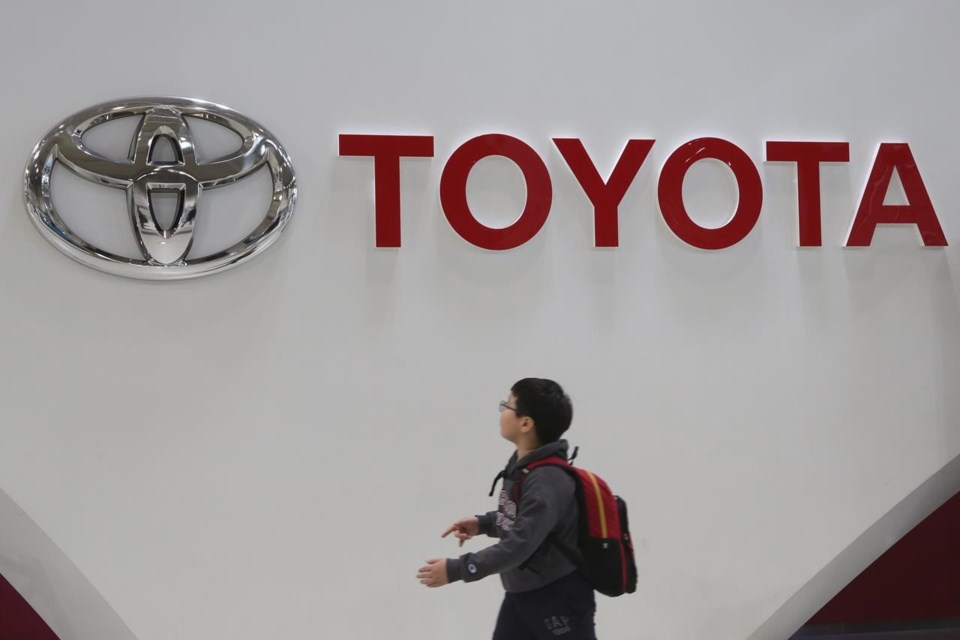TOKYO (AP) — Toyota said Tuesday that its profit fell 31% in the last quarter as a shortage of computer chips offset foreign exchange gains from a weaker yen.
Toyota Motor Corp.'s quarterly profit through September totaled 434 billion yen, or $2.9 billion, down from nearly 627 billion yen a year earlier.
The maker of the Camry sedan, Prius hybrid and Lexus luxury models said it faces many challenges, including rising interest rates, soaring materials costs and fluctuating exchange rates. A shortage in semiconductors, coronavirus lockdowns in Shanghai and flooding in South Africa also bit into earnings.
The global auto industry has been slammed for some time by supply chain crunches because of COVID-19 lockdowns.
“We sincerely apologize for the inconvenience caused to our customers who are waiting for their vehicles. We are working to deliver them as soon as possible,” Chief Officer Masahiro Yamamoto told reporters.
Quarterly sales grew 22% to 9.2 trillion yen ($63 billion), from 7.5 trillion yen a year earlier.
During the first half of the April-March fiscal year, the favorable effects of a depreciating yen added 565 billion yen ($3.8 billion) to Toyota's bottom line, the company said.
A weak yen lifts the earnings of Japanese exporters like Toyota by boosting the value of its overseas earnings when they are converted into yen. The U.S. dollar was trading at about 110 yen a year ago but is now at nearly 150 yen.
Toyota lowered its vehicle production forecast for the full fiscal year, from an earlier estimate of 9.7 million vehicles to 9.2 million vehicles.
Toyota sold 2.6 million vehicles around the world in July-September, up from 2.5 million vehicles in the same period last year.
It now expects to sell 10.4 million vehicles in this fiscal year, down from an earlier 10.7 million vehicles it had expected to sell globally.
The latest target is still better than the 10.38 million vehicles Toyota sold in the previous fiscal year. Consolidated sales include Daihatsu, Hino and Lexus vehicles, as well as Toyota models.
Toyota's chief communication officer, Jun Nagata, said inflationary pressures have Toyota reviewing its model prices, region by region. But for long-selling models, especially in Japan and the U.S., customers have “strong attachments” to certain models, and that means they have an impression about appropriate pricing, too. And so higher costs can’t just be passed on to buyers, he said.
Toyota stuck to its profit forecast for the full fiscal year at 2.3 trillion yen ($15.6 billion), unchanged from its earlier projection. Toyota earned more than 2.8 trillion yen in the previous fiscal year.
___
Yuri Kageyama is on Twitter https://twitter.com/yurikageyama
Yuri Kageyama, The Associated Press




